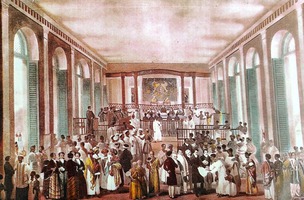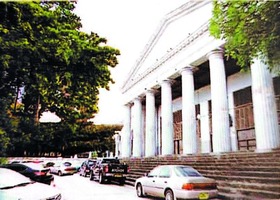A Brief History of the Supreme Court of Sri Lanka
The Supreme Court of Sri Lanka has a rich and evolving history rooted in the colonial and post-colonial transformations of the island’s legal system. Its origins trace back to the Dutch period, when the Hoff van Justitie of Colombo functioned as the island’s highest court. Established under the Dutch Governor in Council, it had both original and appellate jurisdiction over civil and criminal matters, and its decisions could be appealed to the Hoff van Justitie in Batavia (modern-day Jakarta). Roman-Dutch Law, which began to influence legal proceedings in the 18th century, continues to be a foundational source of civil law in Sri Lanka.
Following the British conquest of Ceylon in 1796, a Proclamation in 1799 established civil and criminal courts mirroring Dutch structures but administered under British authority. The Supreme Court of Judicature was formally established by Royal Charter in 1801, comprising two barristers from Britain and Ireland. It became the apex judicial body with jurisdiction over civil and criminal matters and an appellate path to the King in Council in civil cases. The Supreme Court also acted as a Court of Equity and Admiralty. Sir Codrington Edmund Carrington, appointed as Chief Justice in 1801, was the first judge to preside over the Supreme Court of Ceylon.
Over the 19th century, the judicial structure expanded. The Charter of 1833 unified various courts into one Supreme Court with island-wide jurisdiction and introduced trial by jury. The system of circuit courts was formalized, and the Supreme Court could issue important writs like Habeas Corpus. By the late 1800s and early 1900s, several ordinances, including the Courts Ordinance No. 1 of 1889, extended the number of judges and codified the court’s powers. By 1926, the bench consisted of a Chief Justice and five Puisne Justices. The ceremonial traditions of the judiciary, including judicial processions and public trials, became symbols of colonial authority. During this period, the Supreme Court was housed in a grand colonial-era building in Hulftsdorp, Colombo, which served as its home until the early 1980s. This historic structure, known for its stately architecture and legal legacy, now accommodates the High Court of Sri Lanka.
The Donoughmore Constitution of 1931 brought limited self-government and introduced universal adult franchise, making Sri Lanka one of the first Asian countries to grant voting rights to women. The judiciary remained independent, but the influence of elected officials began to increase.With the Soulbury Constitution of 1947, the judiciary was further strengthened. An independent Judicial Service Commission was established to oversee the appointment and discipline of judges (excluding Supreme Court Judges and Commissioners of Assize). The Supreme Court was granted constitutional recognition, and judges could only be removed through a parliamentary process.
Ceylon gained independence in 1948, and though the constitutional framework of the Supreme Court remained largely intact, judicial sovereignty was recognized under the new Dominion government.
The most transformative change came with the Republican Constitution of 1972, which ended judicial review and placed ultimate state power in the hands of the National State Assembly. This was a key shift away from the Westminster model.Under the Second Republican Constitution of 1978, the Supreme Court regained its prominence as the apex court with extensive powers, especially in constitutional matters. It was vested with sole and exclusive jurisdiction to interpret the Constitution, and to hear fundamental rights applications, making it the primary defender of individual liberties. The 1978 Constitution also introduced a powerful executive presidency, and the Court often found itself at the intersection of politics and law. Over the decades, the Supreme Court has played a critical role in adjudicating landmark cases involving constitutional amendments, separation of powers, and the limits of executive authority, shaping the democratic and legal landscape of modern Sri Lanka.
Throughout its evolution, the Supreme Court of Sri Lanka has transitioned from a colonial institution into a sovereign judiciary embedded within a democratic republic. Despite political and constitutional changes, the court has remained a symbol of legal continuity and the protector of fundamental rights in the nation.

Sir Codrington Edmund Carrington, the first Chief Justice of the Supreme Court of Sri Lanka

The Supreme Court of Judicature of the Island of Ceylon By J.Stephanoff

Old Supreme Court Building


